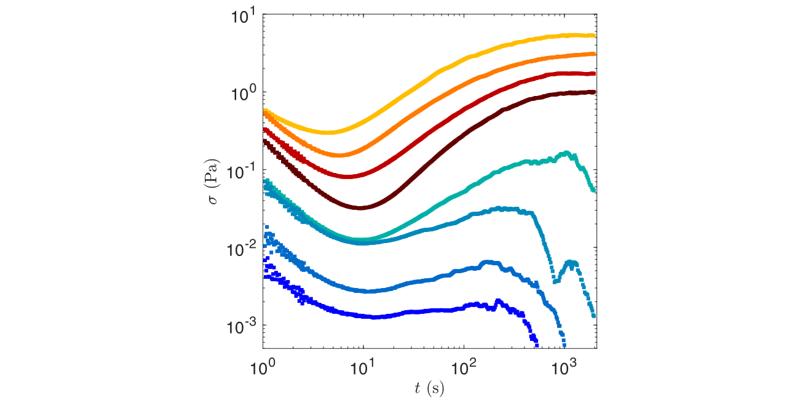- Share
- Share on Facebook
- Share on X
- Share on LinkedIn
Séminaire
On May 15, 2023

Thibaut Divoux (Lab. Physique, ENS Lyon)
Gelation of colloidal suspensions plays a crucial role in the formation of numerous solids. Examples range from yogurt to cement, whose gelation results respectively from the aggregation of casein micelles and CSH nanoparticles. In both systems, short-range attractive interactions between the particles lead to the formation of a percolated network that is responsible for the solid-like behavior of the material. Generated by a kinetic arrest, these solids are out-of-equilibrium structures, whose properties are sensitive to the route followed during gelation. Indeed, external shear often comes to compete with the attractive interactions that drive the gelation, affecting the gel’s microstructure, which encodes the gel’s shear history. Such a “memory effect” is, for instance, easily visualized in the various morphologies of crack patterns that form when a gel is sheared in different ways before being left to dry.
In this talk, we will discuss various aspects of shear-induced memory effects in colloidal gels. First, I will illustrate a way to quantify the gel’s memory through the so-called rheological hysteresis. Indeed, the constitutive equation of colloidal gels, i.e., shear stress versus shear rate, is generally obtained by sweeping up or down the shear rate over a finite temporal window. The up and down sweeps do not superimpose and define a rheological hysteresis loop, which can be used to define a single material-dependent time scale. Second, I will discuss the impact of shear history in gels of boehmite, an aluminum oxide, that shows a remarkable dual behavior relative to a critical shear rate. Following a large shear rate, the gel obtained upon flow cessation is insensitive to shear history. In contrast, for low shear rates, the gel formed upon flow cessation encodes some memory of the shear history, and its viscoelastic properties are reinforced. Moreover, the gel viscoelastic properties increase logarithmically with the strain accumulated during the shear period preceding flow cessation. Such a shear-induced “overaging” phenomenon bears great potential for tuning the rheological properties of colloidal gels.
Date
14:00
Localisation
LIPhy, salle de conférence
- Share
- Share on Facebook
- Share on X
- Share on LinkedIn